
Pershing County is a county in the U.S. state of Nevada. As of the 2020 census, the population was 6,650. Its county seat is Lovelock. The county was named after army general John J. Pershing (1860–1948). It was formed from Humboldt County in 1919, and the last county to be established in Nevada. The Black Rock Desert, location for the annual Burning Man event, is partially in the county. The county is listed as Nevada Historical Marker 17. The marker is at the courthouse in Lovelock.

Linn County is a county located in the northern portion of the U.S. state of Missouri. As of the 2020 census, the population was 11,874. Its county seat is Linneus. The county was organized January 1, 1837 and named after U.S. Senator Lewis F. Linn of Missouri.

Laclede County is a county located in the U.S. state of Missouri. As of the 2010 census, the population was 35,571. Its county seat is Lebanon. The county was organized February 24, 1849, and was named after Pierre Laclède, founder of St. Louis.
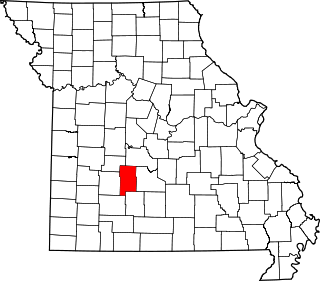
Dallas County is a county located in the U.S. state of Missouri. As of the 2010 census, the population was 16,777. Its county seat is Buffalo. The county was organized in 1842 as Niangua County and then renamed in 1844 for George M. Dallas, who served as Vice President under James K. Polk.

Blairstown is a city in Henry County, Missouri, United States. The population was 97 at the 2010 census.

Alba is a city in Jasper County, Missouri, United States. The population was 544 at the 2020 census.

Conway is a city in Laclede County, Missouri, United States. The population was 788 at the 2010 census. Conway is located 15 miles (24 km) southwest of Lebanon.

Lebanon is a city in and the county seat of Laclede County in Missouri. The population was 14,474 at the time of the 2010 census. It is the county seat of Laclede County. The Lebanon Micropolitan Statistical Area consists of Laclede County.

Evergreen is a village in Laclede County, Missouri, United States. The population was 28 at the 2010 census. It was named Twin Bridges at the 2000 census.

Brookfield is a city in Linn County, Missouri, United States. The population was 4,111 at the 2020 census.

Linneus is a small city in Linn County, Missouri, United States. The population was 281 at the 2020 census. It is the county seat of Linn County.
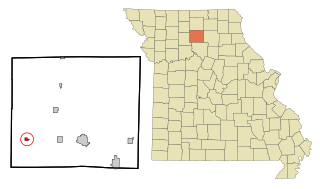
Meadville is a city in southwest Linn County, Missouri, United States. The population was 415 at the 2020 census.

Hayti Heights is a city in eastern Pemiscot County in the bootheel of southeast Missouri, United States. The population was 515 at the 2020 census.

Pleasant Hope is a city in Polk County, Missouri, United States. The population was 614 at the 2010 census. It is part of the Springfield, Missouri Metropolitan Statistical Area.

Shelbyville is a city in Shelby County, Missouri, United States. The population was 518 at the 2020 census. It is the county seat of Shelby County.
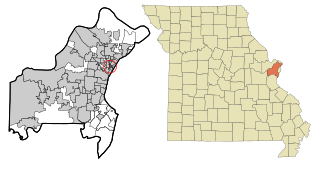
Velda City is a city in St. Louis County, Missouri, United States. The population was 1,420 at the 2010 census.

Schell City is a city in northeast Vernon County, Missouri, United States. The population was 249 at the 2010 census.

Phillipsburg is a village in Laclede County, Missouri, United States. The population was 202 at the 2010 census.
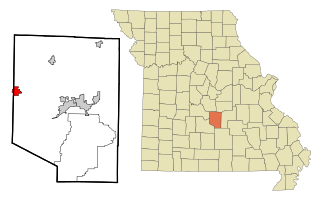
Richland is a city in Camden, Laclede, and Pulaski counties in the U.S. state of Missouri. The population was 1,863 at the 2010 census.
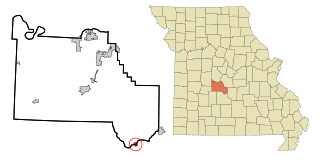
Stoutland is a village in Camden and Laclede counties in the U.S. state of Missouri. The population was 192 at the 2010 census.




















